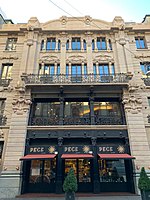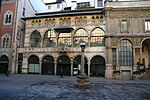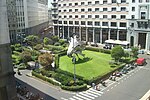Santa Maria presso San Satiro
15th-century Roman Catholic church buildings in ItalyDonato Bramante church buildingsRenaissance architecture in MilanRoman Catholic churches completed in 1482Roman Catholic churches in Milan ... and 1 more
Tourist attractions in Milan

Santa Maria presso San Satiro (Saint Mary near Saint Satyrus) is a church in Milan. The Italian Renaissance structure (1476-1482) houses the early medieval shrine to Satyrus, brother of Saint Ambrose. The church is known for its false apse, an early example of trompe-l'œil, attributed to Donato Bramante.
Excerpt from the Wikipedia article Santa Maria presso San Satiro (License: CC BY-SA 3.0, Authors, Images).Santa Maria presso San Satiro
Via Falcone, Milan Municipio 1
Geographical coordinates (GPS) Address External links Nearby Places Show on map
Geographical coordinates (GPS)
| Latitude | Longitude |
|---|---|
| N 45.462647222222 ° | E 9.1880333333333 ° |
Address
Santa Maria presso San Satiro
Via Falcone
20122 Milan, Municipio 1
Lombardy, Italy
Open on Google Maps











